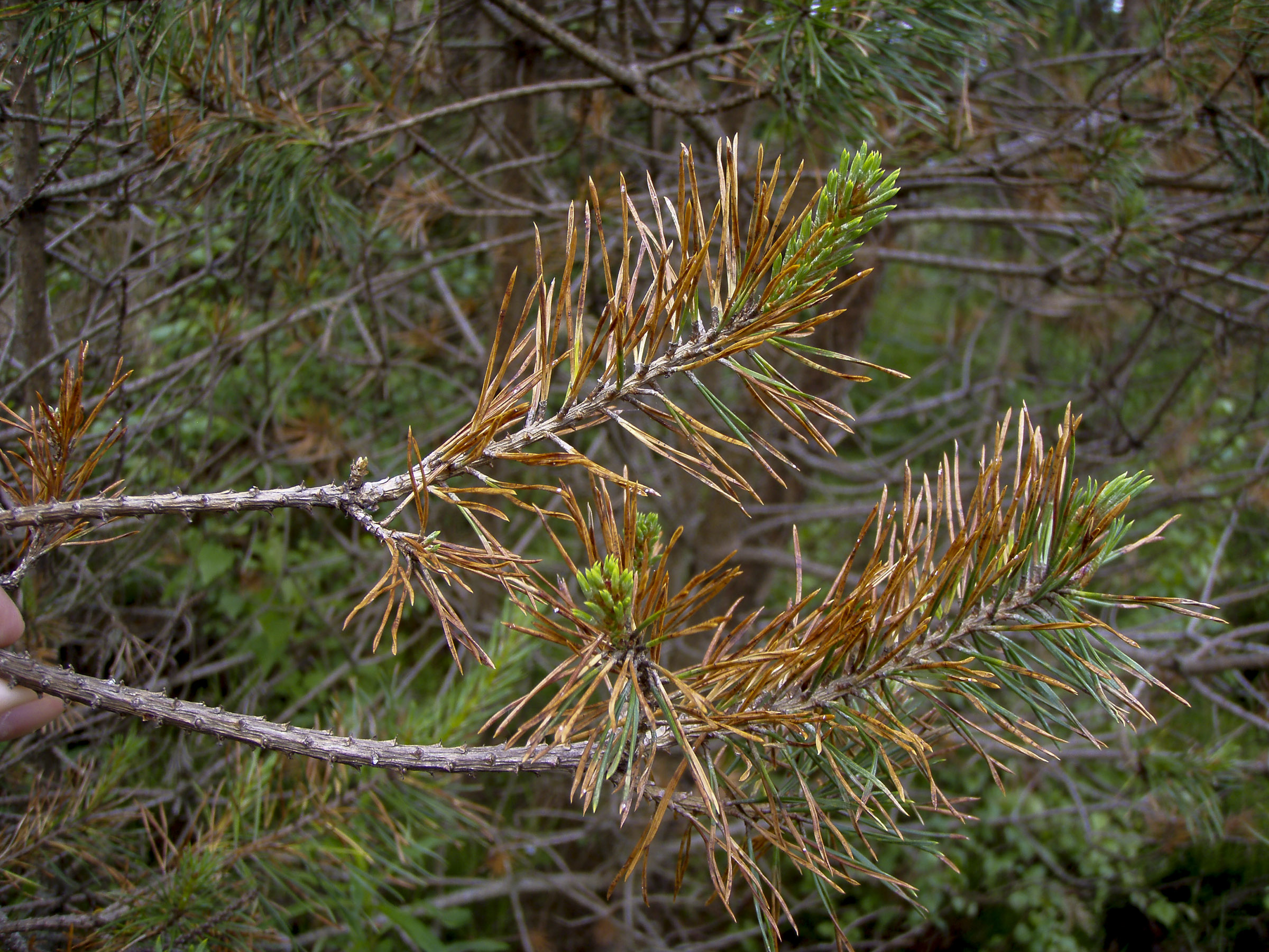We use some essential cookies to make this website work.
We’d like to set additional cookies to understand how you use forestresearch.gov.uk, remember your settings and improve our services.
We also use cookies set by other sites to help us deliver content from their services.

The six main foliar pathogens already causing significant damage to conifers and broadleaved tree species in the UK are described along with the likely impact of climate change on their spread and severity.
Evidence indicates that woodland creation is generally a cost-effective method of climate change mitigation, when compared with a range of alternatives. However, engaging landowners and land managers in woodland creation schemes can sometimes prove difficult, and this affects prospects for meeting national woodland planting targets and associated climate change mitigation...
This Bulletin summarises results gained from the extensive programme of experiments and enquiries carried out by the Forestry Commission’s Research Division, from its inception in 1919 until the year 1970, together with the practical experience obtained in the large-scale raising of planting stocks for the national afforestation programme.
Final report from study to provide evidence of the public value of the Forestry Commission Public Forest Estate in England and establish whether people have different perceptions and expectations of publicly owned forests compared to those in other forms of ownership. By Claudia Carter, Anna Lawrence, Rebecca Lovell and Liz...
Best Practice Guidance for Land Regeneration is a series of Guidance Notes based on research and practical experience in the restoration of brownfield land for woodland and urban greening.
How can we help you? We are always happy to receive enquiries however, due to the volume of requests we receive, you might experience a delay in receiving a reply from us. To minimise the chances of this, we have compiled a list of resources below, which answer the most...
Progress reports (1973-79) by Forestry Commission GB and Forestry Division NI for the eleventh Commonwealth Forestry Conference 1980, covering for each organisation, chapters on – forest policy, forest management, services to management, harvesting and market planning, utilisation of forest products and forest products research, and a statistical summary.
Current upland restocking practice was reviewed in Forestry Commission Leaflet 84 Guide to upland restocking practice. Recent research, both in the UK and overseas, has led to a greater understanding of the establishment process, and the intention here is to draw this body of knowledge together as a basis for...
Home page with links to main sections: news and events, resources, greenspace in practice, greenspace initiatives, partnerships, about us and contact us
Pathology note This document details signs and symptoms of the named tree pest(s) or disease(s) and provides advice on what to do if you suspect the pest or disease is present. Related pages Research and advice on tree pests and diseases Tree Health Diagnostic and Advisory Service Tree pest and...
Cookies are files saved on your phone, tablet or computer when you visit a website.
We use cookies to store information about how you use the dwi.gov.uk website, such as the pages you visit.
Find out more about cookies on forestresearch.gov.uk
We use 3 types of cookie. You can choose which cookies you're happy for us to use.
These essential cookies do things like remember your progress through a form. They always need to be on.
We use Google Analytics to measure how you use the website so we can improve it based on user needs. Google Analytics sets cookies that store anonymised information about: how you got to the site the pages you visit on forestresearch.gov.uk and how long you spend on each page what you click on while you're visiting the site
Some forestresearch.gov.uk pages may contain content from other sites, like YouTube or Flickr, which may set their own cookies. These sites are sometimes called ‘third party’ services. This tells us how many people are seeing the content and whether it’s useful.